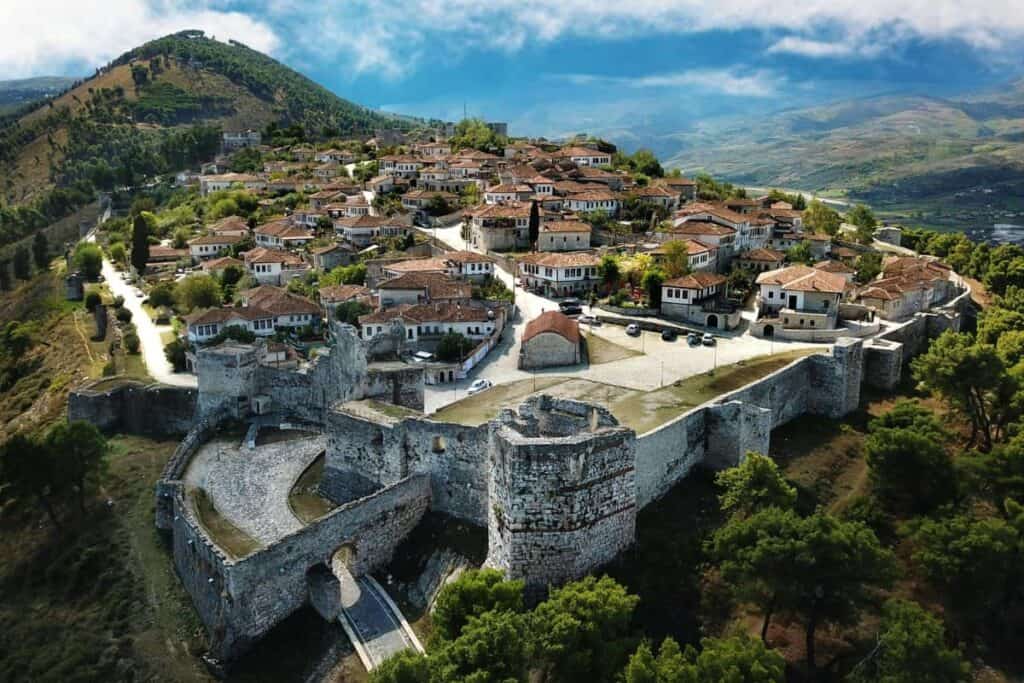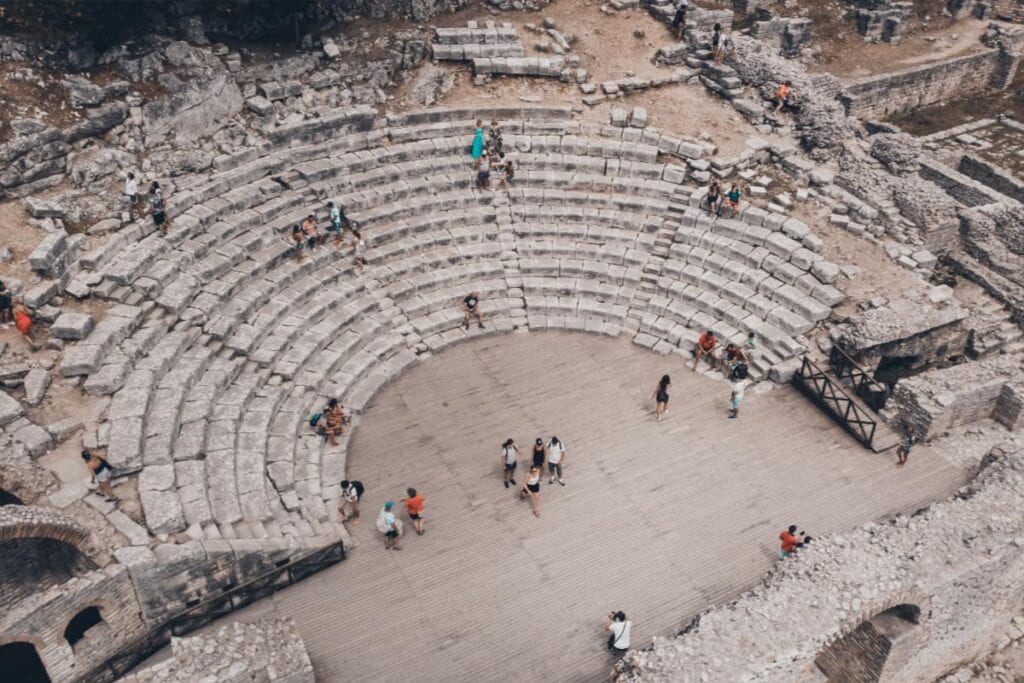Discovering the Spiritual and Historical Depth of North Albania
North Albania is not only known for its breathtaking natural beauty but also for its profound spiritual and historical landmarks. From centuries-old religious sites to monuments that tell the stories of the region’s resilience, these locations offer an immersive journey into the soul of Albania.
1. The Church of Theth
The quaint Church of Theth, nestled in the heart of Theth Valley, is a symbol of faith and endurance in the Albanian Alps.
What to See:
- A small stone church surrounded by majestic mountains.
- The serene interior with minimalistic design, reflects the simplicity of highland life.
Why Visit: This church has served as a spiritual refuge and a cultural landmark for generations of Theth’s residents.
Tip: Visit during the golden hour for incredible photo opportunities with the mountains as a backdrop.
2. Lezha’s Skanderbeg Memorial
The Skanderbeg Memorial in Lezha commemorates Albania’s national hero, Gjergj Kastrioti Skanderbeg, and his enduring legacy.
Highlights:
- The site houses the tomb of Skanderbeg within the ruins of a medieval cathedral.
- Exhibits featuring artifacts and historical accounts of Skanderbeg’s resistance against the Ottoman Empire.
Why It’s Important: This site is a poignant reminder of Albania’s struggle for independence and the unity fostered by Skanderbeg’s leadership.
Tip: Pair your visit with a walk through the nearby Lezha Castle for panoramic views.
3. Sari Salltik Cave and Shrine
Perched high above Krujë, the Sari Salltik Shrine is a mystical site dedicated to a revered Bektashi saint.
What to Explore:
- A pilgrimage site located in a cave, offering stunning views of the surrounding landscape.
- The blend of spiritual elements from Islam and local folklore.
Why Visit: The site is a testament to Albania’s religious harmony and the enduring influence of the Bektashi Order.
Tip: The hike to the shrine can be steep, so wear sturdy shoes and bring water.
4. Mes Bridge: A Testament to Ottoman Engineering
The Mes Bridge, located near Shkodër, is one of Albania’s best-preserved Ottoman-era stone bridges.
What to See:
- A 108-meter-long bridge was built in the 18th century, spanning the Kir River.
- Spectacular views of the surrounding mountains and valleys.
Why It’s Unique: The bridge is a striking example of traditional Ottoman architecture, blending functionality with aesthetic appeal.
Tip: Visit in spring when the river is at its fullest for the most picturesque scenes.
5. Franciscan Church of Shkodër
The Franciscan Church, located in Shkodër, is a significant religious and cultural landmark.
Highlights:
- A Gothic-style church with beautiful stained-glass windows and a rich history.
- A symbol of resilience, having been restored multiple times after damage during wars and political upheavals.
Why Visit: This church represents the enduring spirit of the Albanian people and their dedication to preserving their faith and culture.
Tip: Attend a Sunday service to experience the church’s vibrant community.
6. Kisha e Shën Kollit (St. Nicholas Church) in Kelmend
This quaint church in the Kelmend region is an architectural and spiritual treasure.
What to Explore:
- It’s traditional stone architecture and tranquil surroundings.
- Local celebrations and feasts are held during Saint Nicholas’s feast day in December.
Why Visit: The church is a hub of community life and a window into the region’s unique traditions.
Tip: Combine your visit with a hike in the surrounding area to fully experience Kelmend’s beauty.
7. Rozafa Castle’s Religious Layering
Rozafa Castle in Shkodër is not just a fortress—it also tells a story of religious and cultural coexistence.
Religious Elements:
- Remains of a medieval Catholic chapel within the castle grounds.
- Legends associated with the castle intertwine pagan, Christian, and Islamic beliefs.
Why It’s Fascinating: Rozafa Castle embodies the diverse spiritual history of the region.
Tip: Visit the small museum inside the castle for more context on its historical significance.
8. Bektashi Tekke in Baba Tomorri
While more closely associated with Southern Albania, Baba Tomorri Tekke also influences Northern Albania’s spiritual practices through Bektashi pilgrimages.
What to Experience:
- Insights into the mystical practices of the Bektashi Order.
- Stunning mountain vistas surround the site.
Why Visit: This pilgrimage spot reflects Albania’s spiritual diversity and its deep connection to nature.
Tip: Visit during August to witness the annual Bektashi pilgrimage.
9. The Catholic Cathedral of Shkodër
The Cathedral of St. Stephen in Shkodër, also known as the Shkodër Cathedral, is a landmark of Catholicism in Albania.
What to See:
- The elegant interior features frescoes and ornate altars.
- The historical significance of the cathedral as a site of resilience during religious repression.
Why It’s Significant: This cathedral is a symbol of Albania’s commitment to religious freedom and its Catholic heritage.
Tip: Take a guided tour to learn about the cathedral’s role during Albania’s communist era.
Tips for Visiting Spiritual and Historical Sites in North Albania
- Dress Respectfully: Many sites are places of worship, so dress modestly and be mindful of local customs.
- Plan for Accessibility: Some landmarks, like Sari Salltik Cave, require hiking or climbing, so wear appropriate footwear.
- Learn the Stories: Engage with guides or locals to understand the deeper cultural and historical context of each site.


